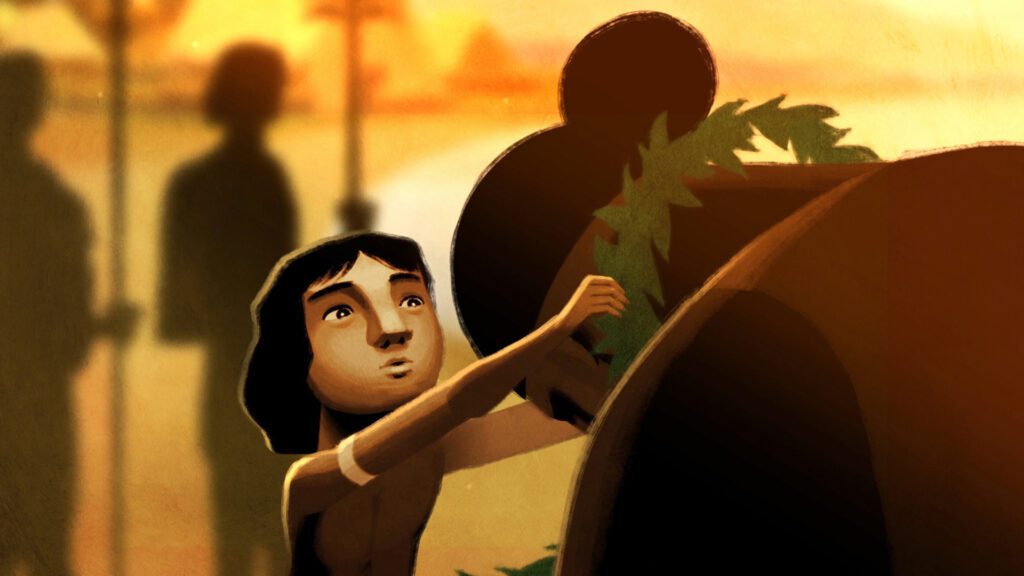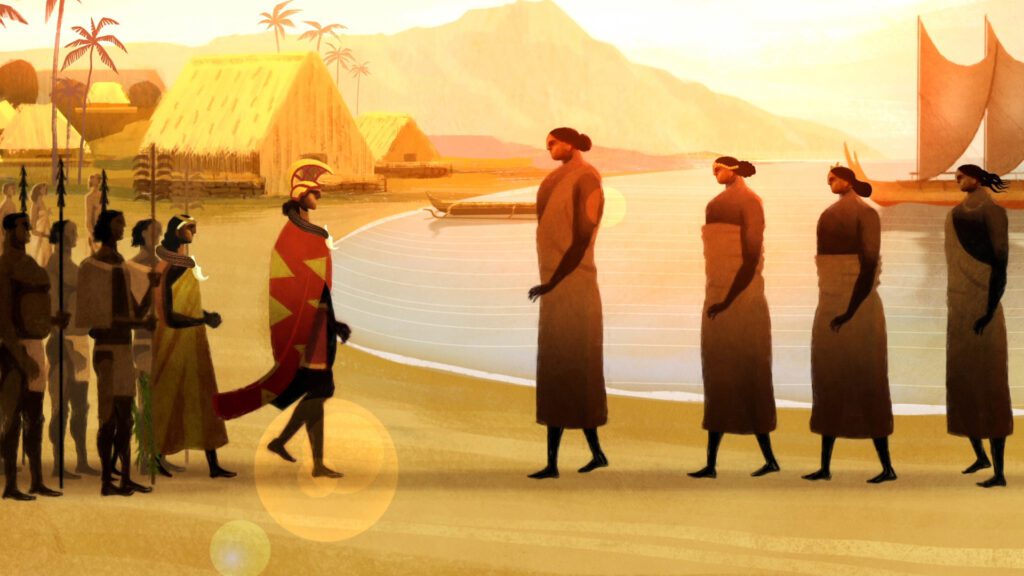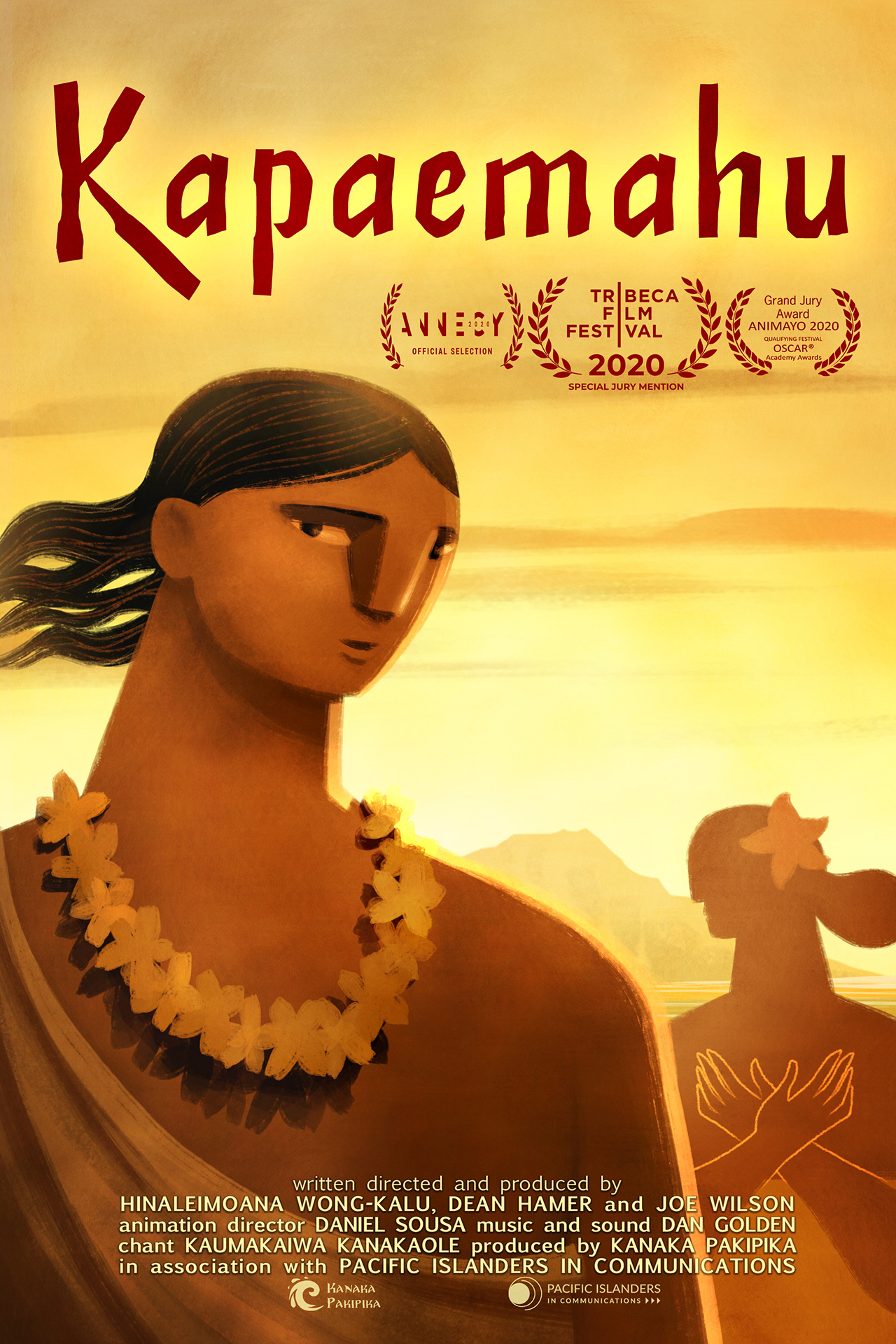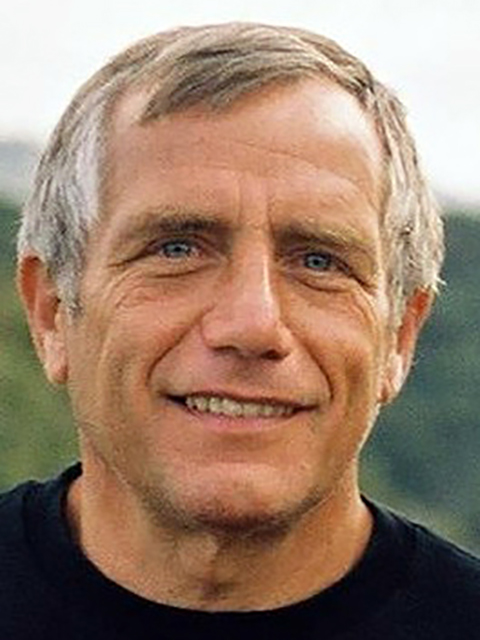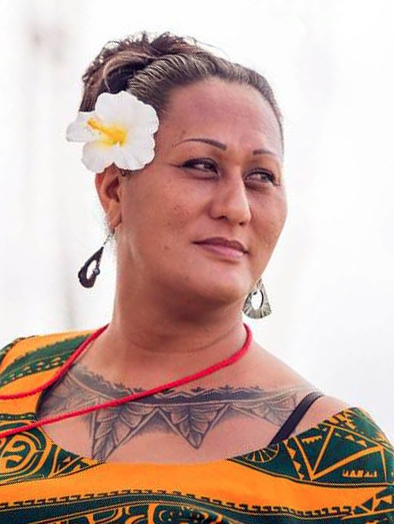导演:希奈雷莫阿纳·黄-卡鲁、迪恩·哈默、乔·威尔逊
制片人:希奈雷莫阿纳·黄-卡鲁、迪恩·哈默、乔·威尔逊
类型:动画短片
时长:8分钟
完成时间:2020
对白语言:夏威夷语
地区:夏威夷(美国)
Director: Hinaleimoana Wong-Kalu, Dean Hamer, Joe Wilson
Producer: Hinaleimoana Wong-Kalu, Dean Hamer, Joe Wilson
Genre: Animated short
Length: 8min
Year: 2020
Dialogue: Hawaiian
Region: Hawaii(USA)
故事梗概 Synopsis
很久以前,四位既有男性也有女性精神的非凡生物将治疗艺术带到了夏威夷,并将他们的力量注入了四块巨石中。 这些石头仍然矗立在威基基海滩上,但它们的真实故事一直被隐藏——直到现在。
Long ago, four extraordinary beings of dual male and female spirit brought the healing arts to Hawaii and imbued their powers in four giant boulders. The stones still stand on Waikiki Beach, but their true story has been hidden – until now.
导演介绍 Director’s Biography
希奈雷莫阿纳·黄-卡鲁,又名库姆·希纳,是一名夏威夷原住民教师、文化实践者和电影制作人,她利用数字媒体来保护和延续原住民语言和传统。 她的电影工作开始于担任获奖电影《Kumu Hina》和《A Place in the Middle》的主人公和教育顾问,并因其开创性的作品获得了国家教育协会人权奖、年度夏威夷原住民教育家和白宫变革冠军。与这些电影相关的影响力活动。库姆·希纳继续她的镜头之旅,制作了 PBS/ARTE 专题纪录片《Leitis in Waiting》和获奖短片《Lady Eva》,讲述她在汤加王国的跨性别姐妹的故事。希纳还是跨性别人群健康的倡导者、丧葬委员会主席、夏威夷事务办公室董事会候选人,以及国际知名的莫纳克亚山保护圣歌“Ku Haaheo E Kuu Hawaii”的作曲家。
Hinaleimoana Wong-Kalu, also known as Kumu Hina, is a Native Hawaiian teacher, cultural practitioner and filmmaker who uses digital media to protect and perpetuate indigenous languages and traditions. She began her film work as a protagonist and educational advisor for the award winning films Kumu Hina and A Place in the Middle, and received a National Education Association Human Rights Award, Native Hawaiian Educator of the year and White House Champion of Change for the groundbreaking impact campaigns associated with those films. Continuing her journey to the other side of the lens, Kumu Hina produced the PBS/ARTE feature documentary Leitis in Waiting and award-winning short Lady Eva about her transgender sisters in the Kingdom of Tonga. Hina is also a transgender health advocate, burial council chair, candidate for the Board of Trustees of the Office of Hawaiian Affairs, and composer of “Ku Haaheo E Kuu Hawaii,” the internationally known anthem for the protection of Mauna Kea.
导演阐述 Director’s Statement
我是卡纳卡——夏威夷群岛原住民的后裔。作为土著人民,我们的生存取决于了解和实践夏威夷文化传统、说和理解我们的语言,以及感受到与自己历史的真实联系的能力。
这就是为什么我想拍一部关于卡佩玛胡(第三性别)的电影,并用奥莱洛·尼豪语(Olelo Niihau)来写作和叙述它——这是自外国人到来之前,夏威夷语的唯一一直使用的形式。 在英语教科书上阅读我们的历史,或者在美国课堂上学习我们的语言是不够的。 我们需要积极参与,以自己的方式讲述自己的故事。
我也是玛胡(mahu),与许多土著第三性别身份一样,它曾经受到尊重,但现在更经常成为仇恨和歧视的目标。我希望我们的年轻人明白,拥抱他们精神中的男性和女性共存的能力并不是弱点,而是一种力量,是一个值得庆幸而不是恐惧的理由。
通过将动画艺术和数字媒体的力量,并与我们本土的讲故事传统相结合,我的目标是实现夏威夷原住民历史学家 S. M. Kamakau 在 1865 年阐明的目标:“我希望我祖国的历史是正确的。外国人不会教我自己人民的历史,而我会教外国人。”
I am Kanaka — a native person descended from the original inhabitants of the islands of Hawai’i. Our survival as indigenous people depends on our ability to know and practice our cultural traditions, to speak and understand our language, and to feel an authentic connection to our own history.
That is why I wanted to make a film about Kapaemahu, and to write and narrate it in Olelo Niihau – the only form of Hawaiian that has been continuously spoken since prior to the arrival of foreigners. It is not enough to read about our history in an English language textbook, or to study our language in an American classroom. We need to be active participants in telling our own stories in our own way.
I am also mahu, which like many indigenous third-gender identities was once respected but is now more often a target for hatred and discrimination. I want our young people to understand that the ability to embrace both the male and female aspects of their spirit is not a weakness but a strength, a reason to rejoice not to fear.
By combining the art of animation and power of digital media with our indigenous storytelling tradition, I aim to fulfill the goal articulated by Native Hawaiian historian S. M. Kamakau in 1865: “I want the history of my homeland to be correct. The foreigner shall not teach me the history of my people, I will teach the foreigner.”

